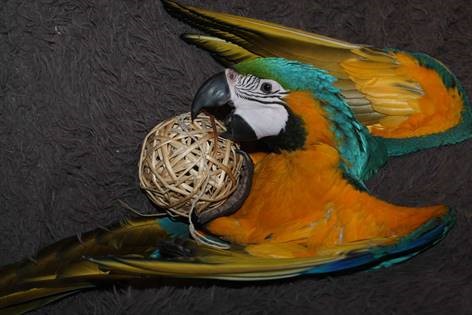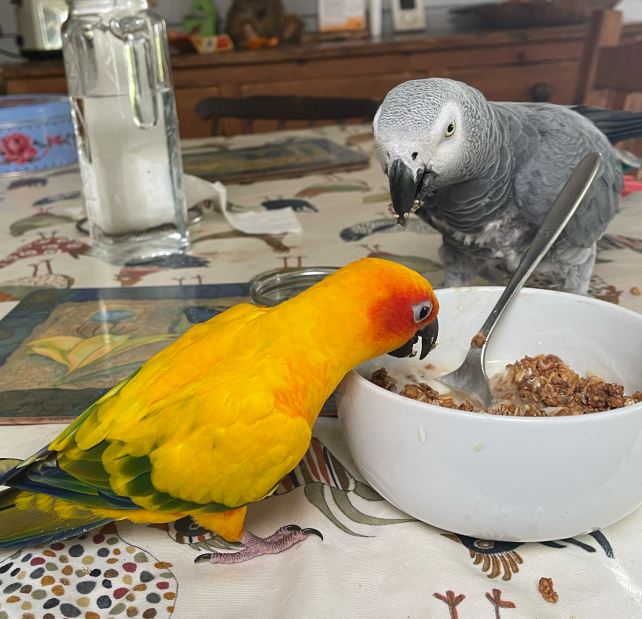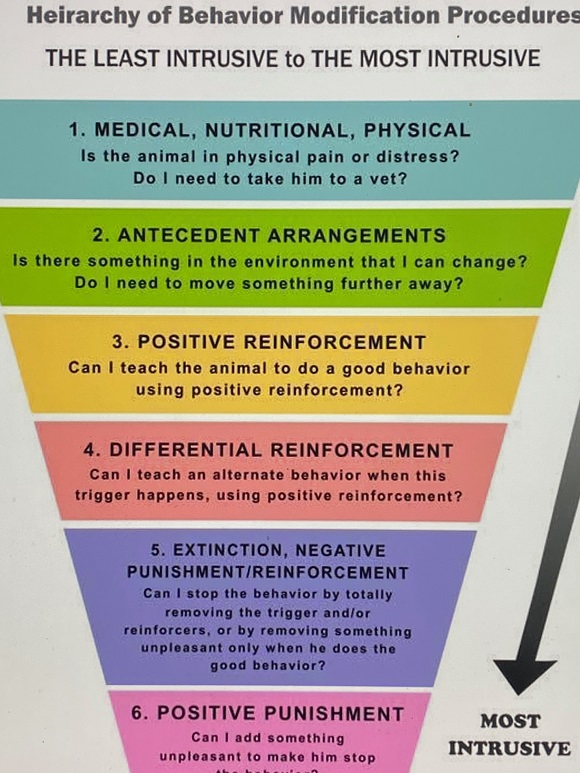Trends In Parrot Husbandry
Posted by Parrot Husbandry, Parrot Trends, Parrot keeping, on 9/1/2024
Much older Parrot keepers can remember when a round cage, a sprinkle of sunflower seeds and no time out of cage was considered satisfactory avian husbandry.
Now in every aspect relevant to bird care there has change and evolution particularly in this century.
Let’s take some important main aspects.
Nutrition
Cages and aviaries
Training methods
Positive and negative reinforcement
Cognition
Altruism
Astonishing recent developments
1 Nutrition
Is there a proven consensus what is the best food for Parrot species? Not really.

Pellets originally designed as poultry food have gained in popularity and have been developed for Parrots. Most vets now recommend pellets as the main part of the diet which is supplemented with fruit and vegetables, seeds and nuts.
Another regime advocates chop - various forms of grains and sprouted food with fresh food. The use of chop has gained many enthusiasts. There is also a popular feeding regime which uses fresh produce and grains as the principal part of the diet.
Without a degree in animal nutrition what regime should you choose?
Some tips for nutrition decisions
Read and study AS MUCH as you can. Become a student again whatever your age. Preferably books and magazines rather than Internet. Why? Because anyone can post on the internet with no editor overseeing the content whereas articles in reputable magazines, or books have had editorial input. Anyone can post on the internet. Some of the advice is misleading. Some is plain wrong.
Visit other aviaries that are available for visits. Ditto zoos. What’s the condition of the birds? Are they bright eyed and alert. Show a keen interest and valuable information, advice and help will come your way. Most zoo curators and handlers are willing often eager to chat.
Be aware that species in the wild feed differently from captive birds.
Decide two or three meals a day.
Cages and aviaries
Small is NOT beautiful. Cages need to be large enough for the full spread of wings and movement in all directions. Budgies and small birds can be seen in woefully small cages in some homes. A well socialised bird will like to be somewhere where he takes part in family life. Birds in sheds are an abomination.
Aviaries be they closed in patios or free standing or even indoors make inhabitants life more agreeable. Birds are designed to fly.
Volunteering
If you can volunteer at a zoo or a sanctuary you will gain general husbandry information and also find out through contact with the avian residents what species of bird you are drawn to. If you are a newcomer to birds learning how to handle different species in a safe environment is invaluable.

3 Training Methods
Positive reinforcement with negative reinforcement kept to the absolute minimum is now the choice for every conscientious handler or trainer. How you learn the principles depends on how assiduously you search out good sources and a dash of luck always helps. Early on in my own Parrot career I came across Barbara Heidenreich and read her books, went to her seminars etc. and she has remained a source of support for over 20 years.
Most countries have Parrot societies again useful source of good information for a fledgling Parrot keeper.
4 Positive and negative reinforcement
These are the methods you need to train the basic commands. Fly to me, stay, drop in, step up. Sadly there are no bird training schools as there are for dogs. Behaviour consultants who make home visits and also so zoom and telephone call consultations.
If you start your bird career with a. well socialised baby, you can pick up the techniques of the method without too much stress. For training sessions little and often is a good rule. Train when the bird may be peckish but not starving. Four sessions of 5 minutes often yields better results than long sessions.
5 Cognition
That avian cognition is far greater than previously supposed has been one of the striking emerging trends in the last decades. Dr Irene Pepperberg starting with Alex a Grey bought at one year old from a pet shop and her working companion until his sudden unexpected death at 31 in 2007, gave clear evidence that Alex had mental abilities comparable to our nearest relatives the primates.
A brain the size of a walnut in an African Grey could perform feats of memory and answer numerous questions. Pepperberg continues her work on avian intelligence at the Alex Foundation with other greys. You tube clips of Alex and his colleagues repay repeated watching .
Altruism
Recent laboratory experiments have shown Parrots working to gain a nut treat when the nut would be given to one of their flock mates in an adjoining cage.
Astonishing recent experiments
Had I not checked out this information I would have thought it might have been an elaborate joke.
The Smithsonian gave out this information in April 2023
Video chats like Zoom and FaceTime are great ways to stay in touch with loved ones—so great, in fact, that Parrots are catching on.
A new study from researchers at North-eastern University, in collaboration with scientists from MIT and the University of Glasgow, investigated what happened when a group of domesticated birds were taught to call one another on tablets and smartphones.
The results suggest that video calls could help Parrots approximate birds’ communication in the wild, improving their behaviour—and, likely, their well-being—in their owners’ homes.
Three scientists, Rebecca Kleinberger, an assistant professor at North-eastern; Jennifer Cunha, a Parrot behaviourist and Northeastern researcher; and Ilyena Hirskyj-Douglas, an assistant professor at the University of Glasgow, were the key figures in this research.
They showed a group of Parrots across a range of species and their volunteer caregivers how to use tablets and smartphones how to video-call one another on Facebook Messenger.
The tests lasted 3 months. Would the birds call one another choice.
The answer was a resounding YES….
The answer, relayed in delighted squawks and head bobs, was a resounding yes. “Some strong social dynamics started appearing,” Kleinberger says.
The birds choose to initiate calls freely. And positive reactions were shown. Strict ethical considerations were built into the tests
Would this be a technique to keep captive birds more content.

Much as I appreciated the information I am doubtful it could spread. The caregivers who initiated the video calls had all be coached by the lead scientists. I doubt that the average Parrot caregiver would be adroit enough to handle the scenarios.
Who knows?
But it does show us just how intelligent our Parrots are and should encourage us to be proactive in enriching their lives/ Not only did the birds initiate calls freely and seem to understand that a real fellow Parrot was on the other end, but caretakers overwhelmingly reported the calls as positive experiences for their Parrots.
Some caregivers watched their birds learn skills from their video friends, including foraging, new vocalizations and even flying. “She came alive during the calls,” reported one.
A few significant findings emerged. The birds engaged in most calls for the maximum allowed time. They formed strong preferences—in the preliminary pilot study, Cunha’s bird Ellie, a Goffin’s Cockatoo, became fast friends with a California-based African Grey named Cookie. “It’s been over a year and they still talk,” Cunha says.
According to Kleinberger, the types of vocalizations the birds used suggested they were mirroring the call and response nature they engage in in the wild—“hello, I’m here!” in Parrot-speak.
The most popular Parrots were also the ones who initiated the most calls, suggesting a reciprocal dynamic similar to human socialization. And while, in large part, the birds seemed to enjoy the activity itself, the human participants played kept the birds; interest. Some Parrots relished the extra attention they were getting from their humans, while others formed attachments for the humans on the other side of the screen.
Computer interaction has been recently employed with other species. Turning attention to avian species I wasn’t surprised to see their participation both with the birds in the videos an their car carers also in the videos
Their intelligence is extraordinary; certain species, like Cockatoos and African Greys, have demonstrated cognitive capabilities equal to that of an early-elementary-aged child.

Parrots vision allows them to make sense of movement on a TV screen. Their vocal abilities have been known for generations
Kleinberger cautions that the findings don’t mean Parrot owners should fire up a Zoom call and assume it will go well. The participant Parrots had experienced handlers who had time to introduce the technology slowly and to carefully monitor their Parrots’ reactions.
As the study underscored, Parrots are finicky about which fellow birds they will respond to—unmediated interactions could lead to fear, even violence and property damage; larger Parrots have beaks more than capable of cracking an iPad into pieces.
Still, the findings suggest that video calls can improve a pet Parrot’s quality of life.
Kleinberger says that Parrots, who have only been kept as pets for a generation or two, are not domesticated in the same way as dogs, cats and horses. “We’re not saying you can make them as happy as they would be in the wild,” she says. “We’re trying to serve those who are already [in captivity].”
And to conclude, we have fund out how much more mentally able our captive Parrots are, So we can use this to enrich their lives and extend our enjoyment of their company.
Resources
The field is enormous and growing. I can share some of my favourites indeed essentials.
Parrots of the Wild A Natural Historyof the World's Most Captivating Birds
Catherine Toft and Timothy Wright.T he authors as well as using their years of experience their own work, they also referenced over 4000 research sources. They deal with Parrots evolutionary history, their natural behaviour and their conservation plight. The volume has a global reach yet is readily assimilated by non scientists Since it was published in 2015, it has been my go to book for inspiration and information.
Joseph Forshaw has written Parrots of the World, a comprehensive guide. Again any time spent in its pages enriches your knowledge. You're thinking of acquiring a particular Conure, look her up in Forshaw for her natural behaviour.
Less well known perhaps in the USA and Europe but a classic in the making is Tim Low's Where Song began. The extraordinary impact Australia's birds have had on birds globally.
While discussing classics two volumes are exciting Konrad Lorenz King Solomons Ring published first in German in 1952 but since spread out all over the world. Lorenz is in a sense the father of ethology the study of animals in their natural state. Lorenz also correlates this to the captive state. A couple of his quotes to whet your appetite.
'Barking dogs occasionally bite but laughing men hardly ever shoot.'
I have found the missing link between the higher ape and civilised man; it is we.'
For nutrition no standard text exists. Pellet manufacturers extol their produce as do seed merchants or other food combinations. Freeze dried fruit and vegetables are gaining popularity. A Parrots Fine Cuisine Cookbook a nutritional guide written by Karma Budais' in 2018 will freshen your ideas and the recipes look good enough to share with the birds.
If you decide on enclosing in a patio or constructing an aviary, you'll find a paucity of written resources. Prices change inexorably upward and the quotes you collected will be out of date. Visit aviaries and zoo in your region and see what suits the area.
Training methods are now firmly geared towards positive and negative reinforcements . If you can join a workshop or seminar from an established trainer you will benefit more than academic study. Was high a fine trainer n learning to imitate her methods is the best way firers. Research has now shown avian subjects exhibiting altruistic behaviour.
One text book will change your ideas. Paul Chance Learning and Behaviour now in its 7th edition meant for students but anyone who needs to sort out the terms and techniques of behaviour science methods will benefit from its clarity.
Another resource that will never stop giving is your avian companion. Watch her body language. Keep training sessions short watch your relationship expand in depth and enjoyment.

